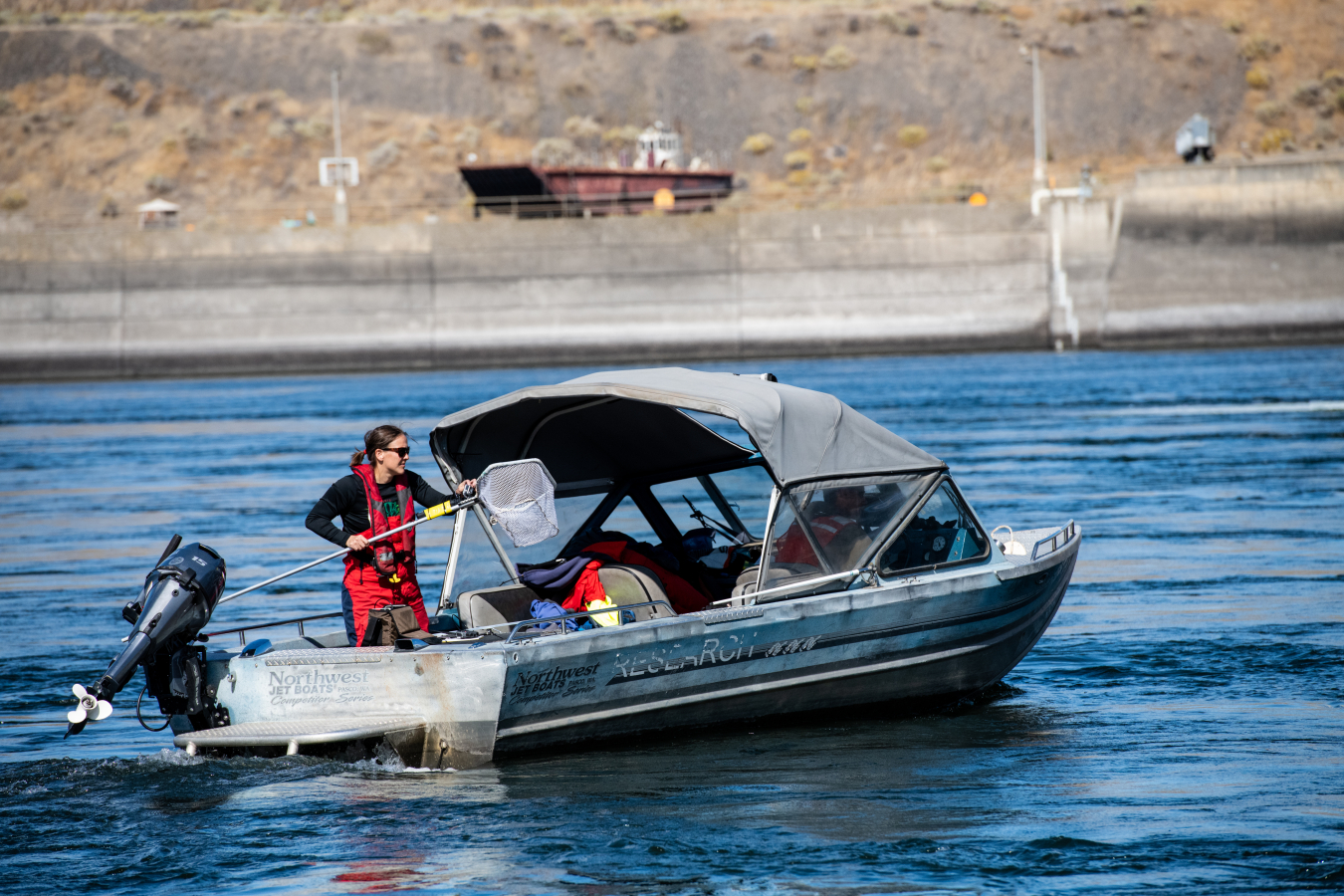This Earth Day, we highlight WPTO successes supporting R&D and testing of marine energy, hydropower, and pumped storage systems for a flexible grid.
Office of Critical Minerals and Energy Innovation
April 23, 2020
PNNL researchers retrieve the Sensor Fish after they’ve traveled through the dam.
Since 1970, people across the globe have celebrated Earth Day and used the opportunity to discuss ideas that could protect our environment and natural resources for future generations. At the Office of Energy Efficiency and Renewable Energy, we work with partners across government, industry, and our National Labs to advance technologies that improve our country’s access to clean, affordable, and reliable electricity.
This Earth Day, I’d like to acknowledge some of the successes within my office, the Water Power Technologies Office (WPTO), which supports research, development, and testing of marine energy, hydropower, and pumped storage systems for a flexible, reliable grid. The primary goal of WPTO’s work is to drive improvement in these water power technologies—lowering costs, increasing efficiency, and continually increasing the ability to safeguard the environment and the many aquatic species in our lakes, rivers, and oceans. Our diverse portfolio of environmentally focused projects includes cutting-edge solutions to better characterize, avoid, and reduce potentially harmful impacts from water power technologies while still leveraging water power’s benefits. We work closely with environmental scientists and technology innovators as we pursue these important efforts.
Examples of our recent successes include:
- Ice Harbor Dam – Upgraded Turbine Test: Ice Harbor is a large facility within the Federal Columbia River Power System, and recently had some of its turbine runners replaced with the goal of improving fish passage survival; initial estimates, based partially on data provided by PNNL-developed sensors, are showing over a 98% rate of juvenile salmon survival. Under the current WPTO HydroPASSAGE project, PNNL and partner ORNL are providing new information and tools to increase fish survival through turbines and other hydropower structures across the nation and around the world.
- Fish Protection Prize: Launched in January 2020, this prize is a partnership with the Bureau of Reclamation that asks competitors to develop a concept and design a research and testing plan to improve fish protection (or exclusion) technologies to decrease the number of fish susceptible to river and canal diversions, unscreened diversion pipes, or intakes at hydropower dams. The prize’s first round, the concept stage, closes April 24, and WPTO will select up to 10 winners; the next two stages of the prize—incubation and pitch contest—will run through the fall of 2020.
- The Triton Initiative: This project, led by PNNL, aims to improve the efficiency and effectiveness of environmental monitoring technologies. Leveraging the facilities at PNNL’s Marine Sciences Lab in Sequim, Washington, the initiative supports the development and testing of seven DOE-funded research projects to improve environmental monitoring technologies for use at marine renewable energy sites. These projects include sensor and software development for evaluating benthic habitats, monitoring marine organism interactions, measuring acoustic outputs of marine energy devices, and measuring electromagnetic fields associated with subsea cables. The Triton Initiative is also conducting field trials aimed at developing guidelines for environmental data collection and analysis at marine renewable energy sites.
- Fish Passage Technologies Projects: The results of three projects funded under a 2017 competitive funding opportunity, Innovative Solutions for Fish Passage at Hydropower Dams, are helping the hydropower community improve fish passage technologies:
- Alden Research Laboratory recently completed lab and field testing of a modular, scalable downstream eel bypass system.
- The University of Massachusetts Amherst is conducting a second set of laboratory tests with multiple fish species this spring at the U.S. Geological Survey Conte Anadromous Research Center using their Entrance Palisade design, which plans to deliver a multispecies solution with improved attraction and upstream passage rates.
- The Electric Power Research Institute, in collaboration with PNNL, recently delivered open-source code from a project that used machine learning to automate detection of out-migrating American eel in sonar images.
- Fish Tracking Tags: In FY 2020, WPTO will launch a new acoustic telemetry fish tag development project at PNNL that will improve the tools available to scientists who study species of concern for hydropower, like the American shad. This new tag follows a long line of work at PNNL to improve technologies to monitor fish movement, migration, habitat use, and interactions with hydropower dams.
As we celebrate the 50th anniversary of Earth Day, WPTO celebrates its project successes and contributions to the health of the planet and protecting our critical aquatic resources.
Alejandro Moreno

Alejandro Moreno is the former Associate Principal Deputy Assistant Secretary for the Office of Energy Efficiency and Renewable Energy at the U.S. Department of Energy (DOE). He provided advice and leadership in the strategic planning, execution, and oversight of the EERE portfolio.
Previously, he served as the Office's Renewable Energy Deputy Assistant Secretary and as the Director of the Water Power Technologies Office. In addition to his roles at DOE, he has served in the energy groups of the World Bank and International Finance Corporation, where he designed and led regulatory reform programs to spur funding for renewable energy and rural electrification. Moreno holds a bachelor’s degree from Stanford University and a master’s degree from Johns Hopkins University School of Advanced International Studies.
More by this author
-
 Former Associate Principal Deputy Assistant Secretary, Office of Energy Efficiency & Renewable Energy
Former Associate Principal Deputy Assistant Secretary, Office of Energy Efficiency & Renewable Energy

